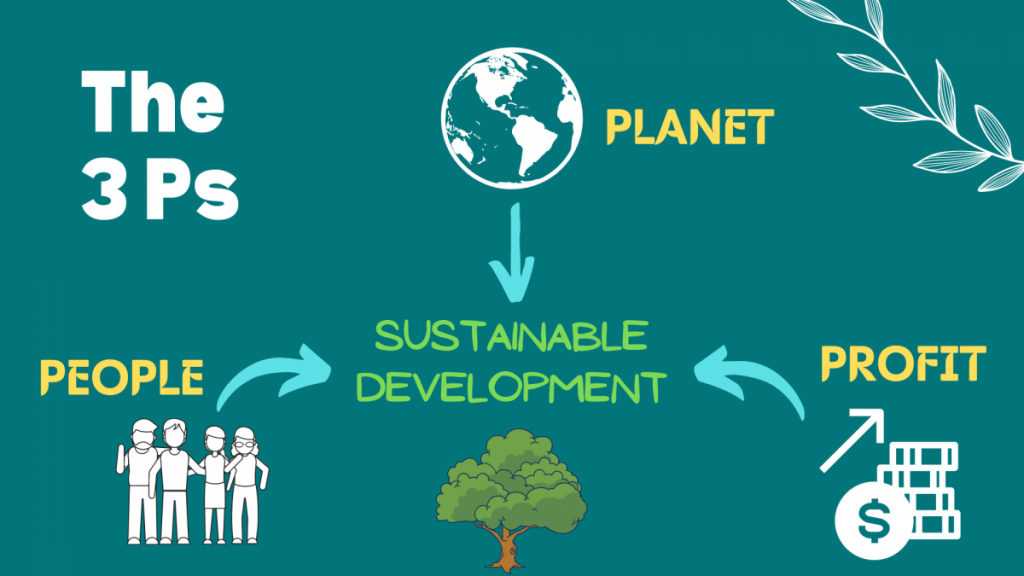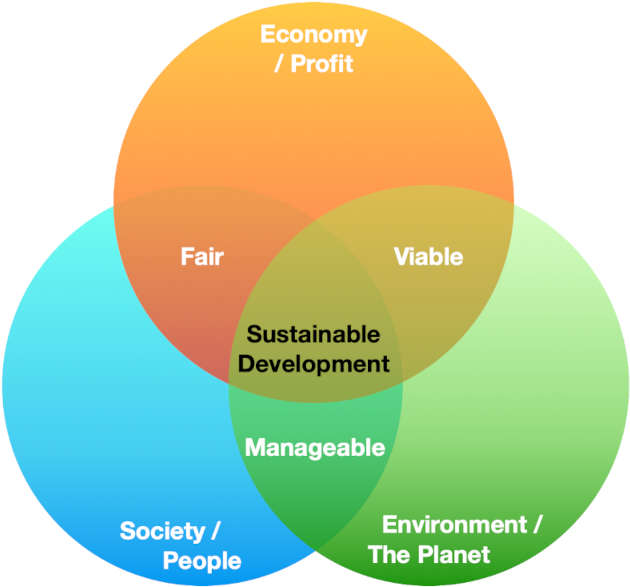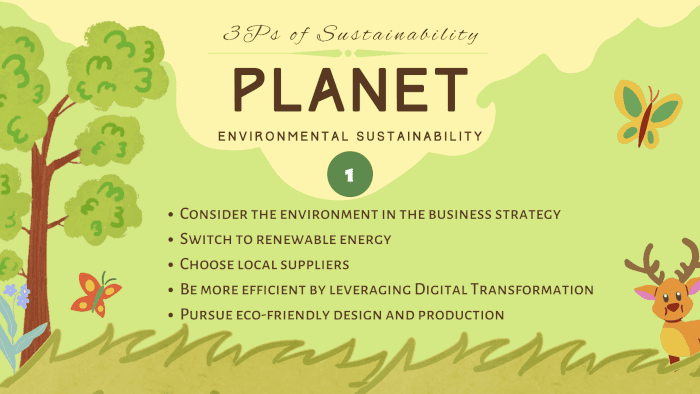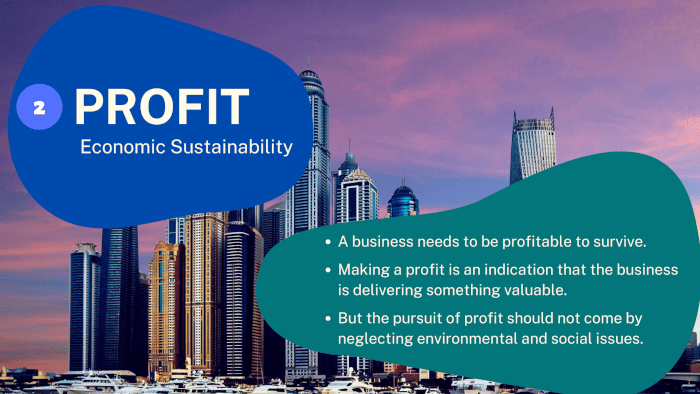The 3 Ps of sustainability are the three fundamental principles of sustainable development and sustainability. Knowing what the 3Ps of sustainability are and their importance is paramount to achieving our eco-friendly goals.
The 3 Ps of sustainability are People, Profit, and Planet. Those are the 3 principles upon which sustainability is built and sustainable development achieved. The three Ps are used to assess the sustainability of an organization, product, or service.
Key Takeaways
- The 3 Ps of sustainability are People, Profit, and Planet, guiding balanced, sustainable development.
- Ensures businesses consider social responsibility, economic value, and environmental impact.
- Aims for long-term viability, integrating eco-friendly practices with economic and social well-being.
People, Profit, Planet

What are the 3 principles of sustainability?
The 3 Ps of sustainability are People, Profit, and Planet. These are also referred to as the triple bottom line, 3 principles of sustainability, the three principles of sustainable development, or three pillars.
The key concept behind the triple bottom line is that a sustainable organization should achieve the right balance between social responsibility (people), economic profitability (profit), and environmental friendliness (planet) principles, getting the best balance for all 3 P’s of sustainability.

In other words, business management and operations should not be purely based on economic considerations, but should also take into account the social and environmental factors and implications.
Finding the right balance between the three principles of sustainability should be a very important part of the long-term corporate strategy, fostering a sustainable business culture both in the organization and externally. If done correctly, those policies can lead to important positive returns in terms of economic competitiveness, product quality, and brand awareness.
This same framework is also known as the three Es of sustainability, while a similar model with 4 pillars is giving more importance to the human sustainability component.
Suggested read for a practical guide:
The first P: the Planet

The first P of sustainability is the Planet. An environmentally sustainable business should responsibly consider the impact on the planet of the organization’s operations and strategy.
Environmental sustainability can be pursued in many ways, here are some examples:
- Choose a local supplier instead of an international one.
- Switch to renewable energy and reduce CO2 emissions thanks to green technology.
- Modernize your infrastructure and implement a digital transformation: this will improve the efficiency of your business, making it both more eco-friendly and more profitable.
- Promote recycling throughout the business and improve product design to make it easier to recycle base materials.
- Improve processes and design cycle by switching to more innovative technologies and using more environmentally friendly materials.
- Plant and preserve as much as possible trees and forests.

The beautiful thing is that each one of those steps will not only reduce the corporation’s impact on the planet but very often will also lead to products of better quality and increased profitability!
This is a win-win scenario that you can’t afford to pass on or your business may risk becoming uncompetitive in the coming years.
The second P: Profit

The second P represents the profit. A business needs to be profitable to be sustainable, without profit the organization would not survive.
Adding economic value is also an indirect indication that the company is delivering something useful and valuable to society. This is the foundation of the free market: if your product is not useful or there is already too much of it available on the market, you will hardly get any profit from it.

For those reasons, profitability is essential to achieving sustainable development and ensuring the success and viability of the business long term.
The third P: People

The third P represents the people, cultural sustainability, and the social responsibility of a business. This applies to both people within and outside the organization, including also society in general.
A sustainable business should not only look after the rights, development, well-being and overall working conditions offered to their own employees but also ensure the fair treatment of all the people involved in the supply chain.
Additionally, when possible, the socially responsible corporation should also contribute to the improvement of the general social situation of the environment they operate in. This may include things such as charitable donations or giving preference to suppliers operating responsibly within the local community. Benefiting directly or indirectly from the local socio-economic community your business operates or deals with is extremely important.
Social sustainability is a key element of business success. Getting the backing of employees and all the people in the company’s supply chain will be a great asset for long-term growth and brand appreciation.
This is especially true when you consider the growing number of eco-friendly and environmentally conscious consumers in modern society.
Being a socially responsible business will for sure help to achieve the long-term success you are aiming for.

Why are the 3 Ps of sustainability so important for your business?
A sustainable business should have a proactive approach towards the planet, people, and profit. The three P’s of sustainability offer a model you can rely on to future-proof your organization.
Climate change, loss of biodiversity, and the eventual depletion of natural resources can’t be ignored any further. Given the growing public, government, and investors’ awareness regarding environmental and social issues, sustainability is going to be a dominant theme for the current decade.
The earlier you can align your corporation with this growing trend, the better it will be for everybody, especially for your business’ competitiveness.
The old business model was focusing on the short-term profit for the shareholders, leading to neglect of environmental impact and to adopt practices that could be harmful to society, such as exploitation of workers, child labor, and others.
This short-term mentality leads us to the challenges we are facing today, such as inequality and a long list of environmental issues: from climate change to plastics in the oceans, deforestation, and more. This shorter-term thinking is clearly not sustainable and nature is starting to come back to bite us.
The new business model that will become dominant in this decade is instead focusing on sustainable development and the 3 P of sustainability. Allowing us to tackle the social and environmental problems caused by the mistakes we made in the past.
The 3 Ps of sustainability are so important for your business also because:
- The consumer is going to prefer more and more brands that can demonstrate sustainable business practices.
- Governments will very likely impose more regulations and mechanisms to factor in the environmental cost of business operations. One of those is for example the “carbon market” where more virtuous businesses can trade carbon credits with the less sustainable ones. The less environmentally friendly corporations are mandated to offset their emissions by purchasing those credits. This creates an economic incentive for businesses pursuing energy efficiency and a disadvantage for those who are not.
- Banks and investors are considering more and more ESG (environmental, social, and governance) scores when deciding where to allocate funds. The result is that sustainable organizations will have easier access to credit and investments to grow the business.
- Recent data published by McKinsey show that adopting the right Industry 4.0 technologies and pursuing sustainability can lead to increased business resilience, efficiency, and profitability:
- Covid pandemic Industry 4.0 response: out of 400 companies, 94% of them reported that their Industry 4.0 helped to keep the business running. While 56% added that their recent digital transformation efforts were essential for their crisis response.
- Industry 4.0 adoption: “Advanced analytics-enabled scheduling and dispatching increased personnel efficiency by 50 percent, while a manufacturing control tower eliminated rework and an IoT-enabled manufacturing system reduced material cost by 10 percent.” Those results are not only improving business competitivity and profit margins but are also leading to increased sustainability as a result of the improved efficiency.

In conclusion, it is very important for the modern business leader to be aware of the current trends regarding sustainability and the coming technological innovations, allowing the organization to stay ahead of the curve and benefit from the coming transformation.
Adopting responsible company policies for the people, the planet, and the way profit is considered, can lead to important medium and long-term benefits in multiple areas.
The best way to pursue those objectives is to incorporate the principles of the 3 Ps of sustainable development in the corporate strategy, allowing the organization to find the right balance between social, environmental, and economic factors.
Always remember that, in the long run, not taking care of the people and the planet can lead to severe costs and damages to your organization, so you may want to use some inspiring quotes to support the right mindset in your business.
While on the other hand there are many opportunities that can not only make the world a better place but also benefit your company.
Finally, pursuing new digital transformation technologies and the transition to industry 4.0 can not only increase profitability but also lead to improvements in sustainability. For all of those reasons, being at the forefront of technology has never been so important and you should take action now!


